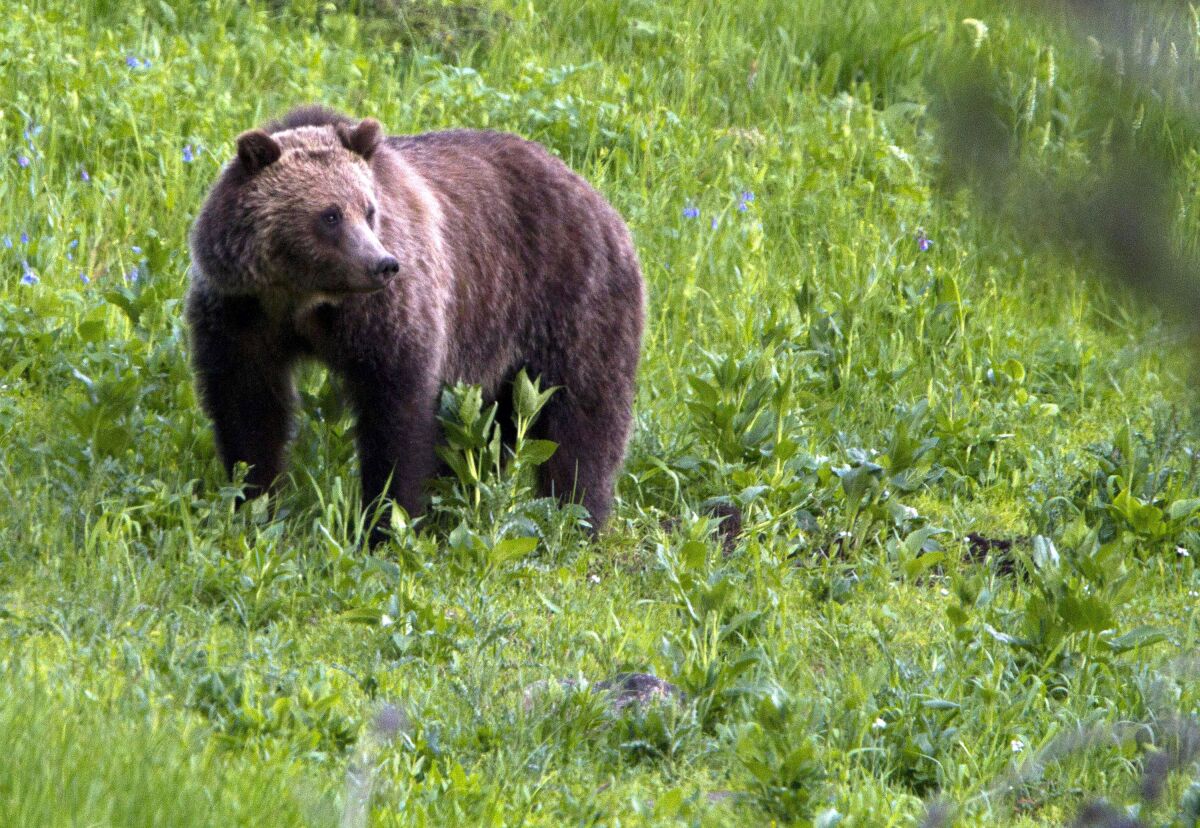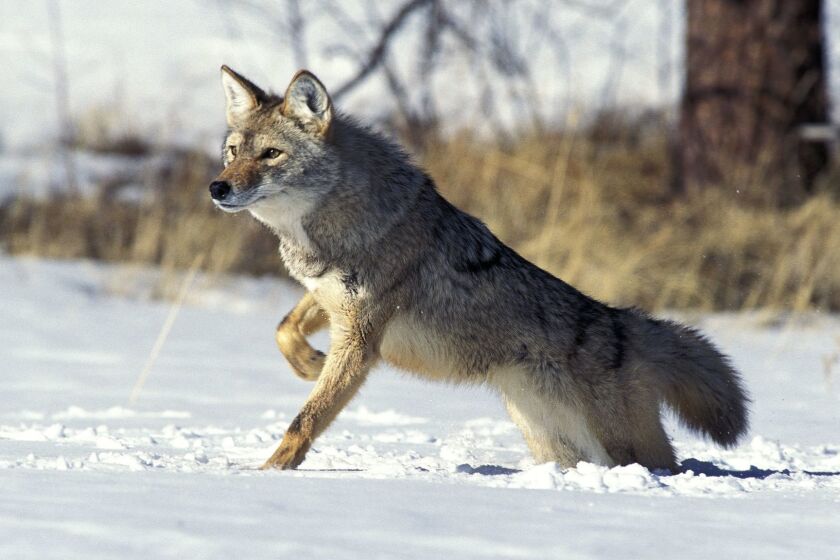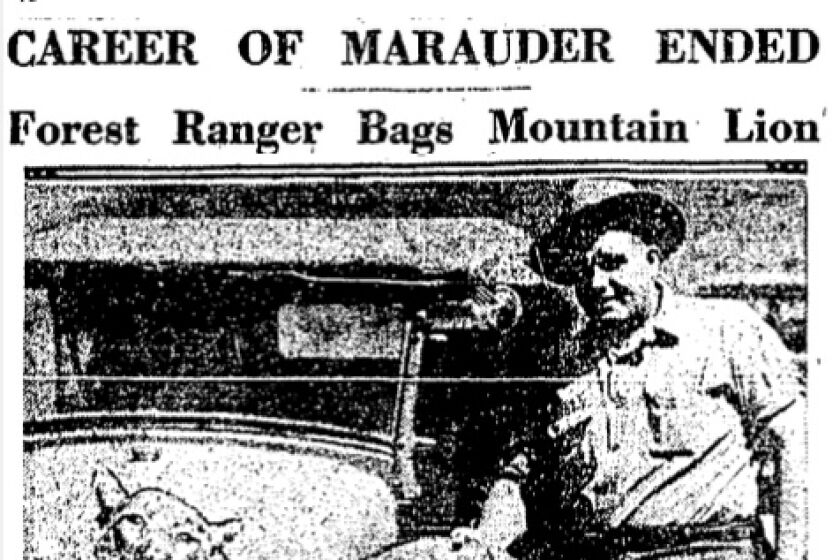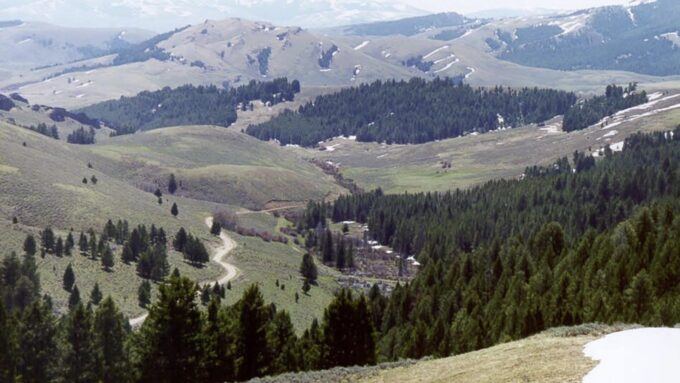In Alberta the government continues to allow the sport hunting of these endangered animals, for no good reason except it brings in big bucks for some outfitter pals of King Ralph. Of course humans are responsible for their decline, we are their only natural enemies. And as the government allows for recreational expansion into the wilderness, their territory is threatened. And they will come in contact with humans who insist on colonizing the wilderness for their 'enjoyment'.  Humans leading cause of death for grizzlies, report finds
Humans leading cause of death for grizzlies, report findsLast Updated Mon, 11 Jul 2005 19:31:41 EDT
CBC News
The main cause of death for grizzlies living in the Rockies is their interaction with humans, an 11-year study into the bears' population trends has found.
The Eastern Slopes Grizzly Bear Project tracked bears living in the Banff and Kananaskis areas for more than a decade. Only one-quarter of female grizzlies and just over 10 per cent of male grizzlies die of natural causes, the study's authors found.
Human interaction, either directly or indirectly, is the main cause of death, Stephen Herrero, a professor of environmental design with the University of Calgary, said. Alberta has closed trails this summer to protect people from grizzly bear attacks.
Their habitat is being eroded, the bears are getting hit by cars, they're hunted – both legally and illegally – and when the animals become a serious enough problem in an area they're either shot or moved to another location.
As well, researchers found the annual birth-rate for bears in Banff and Kananaskis is the lowest in North America. Grizzlies are being driven from their most productive habitats and are, literally, eating garbage.
Poor nutrition is a contributing factor to the low birth rate, the report's authors said. When bears live so close to people, it's easier for them to dine at the local dump than in alpine meadows, the researchers said. Herrero advocates programs to address food and garbage attractants to prevent grizzlies from getting into trouble.
He's also in favour of having the bears' status changed to "threatened" in Alberta. The change would mean no hunting, and greater restrictions on road construction in grizzly habitat.
"Grizzly bear hunting can be maintained sustainably, but it can only be maintained sustainably if we put it in a context of addressing all the other causes of mortality," he said.
No it can't. There should be no bear hunting period. As Liberal opposition critic Bill Bonko has said:Liberal Critic Calls for Greater Protection for Grizzly HabitatIt's up to governments to decide what price they're willing to pay to make sure grizzlies survive in the Rocky Mountains, such as closing recreational trails for a few days or shutting off large tracts of land from oil and gas activity, forestry, coal mining or other industry, he said.
That's a cop out, the Klein government will take industrial development over protecting wildlife any day. That's why they opened up Kananaskis in the first place, for the Winter games and a golf course. Yep get out and enjoy the wilderness while putting around."Bears are under more pressure now than ever," agreed Nigel Douglas of the Alberta Wilderness Association. "We're sort of pushing and pushing and pushing the places where bears live. And some time we need to start saying enough's enough, and we need to take a step back and leave some room for the bears."
* FROM JULY 6, 2005: Alberta closes trails to keep people away from bears Last week, the province moved to close a number of trails in provincial parks around Canmore and Kananaskis, saying they wanted to keep people away from bear habitats.
A Canmore woman was killed in early June when she was attacked by a grizzly while out running near a golf course.
Yes she was running in an area that had been blocked off due to the fact that Grizzly bears were out and about in the area. Being arrogant she and her friends ignored the signs and the result was she was killed. Being a young bruin the bear didn't know that the golf course was off limits.
The province said the decision to close the trails and allow them to grow over was not triggered by the mauling death of a jogger last month. On June 5, Isabelle Dube was running with two friends near the Silver Tip Golf Course in Canmore when they encountered a grizzly. Her friends backed away, while Dube, a 36-year-old mother of two, climbed a tree. When wildlife officers reached the scene, Dube had been killed. Those who knew her said Dube, a competitive mountain biker, would not want to see the trails closed.The province said 200 kilometres of trails in parks in the Canmore area will remain open for walkers, runners and cyclists.
As usual some of the community expressed the speciesism that given a choice between humans and bears they supported humans being stupid. Like those who still insist it is their god given right to trespass in Grizzly territory, for their Olympic aspirations, and their Olympian egos.
What part of Wild in Wilderness don't these little colonialists understand?
Not all of the citizens in Canmore are anti-bear, there is a campaign going on to actually make Canmore bear friendly.
The headline in today’s (June 7, 2005) Calgary Herald – “Was the killer bear handled properly?” – only hints at the complexity of factors that led to the tragic deaths of Isabelle Dubé and Bear #99 last Sunday. The real question, and answer, may rely less on handling bears than it does on handling people and human development.
And of course as a result of ignoring the warning that the trail was closed, resulted in the useless death of the Grizzly. Why, cause he was being a wild animal of course. And not a particulary aggressive one. But he got killed for having reacted to something these humans did, including being where they should not have been.A wildlife officer, accompanied by one of the women, returned to the site of the attack, where the officer killed the bear with a single shot.
Bear relocated in May
Fish and Wildlife officials said the 90-kilogram, four-year-old male bear had been captured and moved out of the area at the end of May, after continually visiting the golf course and after it approached a woman. The woman and her small dog backed away slowly and the bear left.The bear was relocated not because of any aggressive behaviour, but as a way of discouraging it from approaching populated areas, said Ealey. With wildlife officers tracking it, the bear travelled from Banff National Park back to the Canmore area – about 15 kilometres over rugged terrain – in a few days.Ealey said the bear hadn't shown any aggressive behaviours since it returned. "The bear was not aggressive, it behaved as a bear its typical age and sex would," Ealey said when asked why the bear hadn't been moved farther away. The grizzly was kept within its home range, Ealey added. Dube was the first person killed by a bear in Alberta since 1998.
The grizzly that killed Dube. (photo: Craig Douce, Rocky Mountain Outlook)
 As Bonko points out the problem is colonialist expansion in the Rockies;
As Bonko points out the problem is colonialist expansion in the Rockies;"Bonko is concerned that the incursion of industrial development into natural habitat areas is driving grizzlies from their natural homes into human-populated areas, increasing the possibility of incidents between humans and grizzlies.
“It’s this government’s policies that have allowed for large-scale industrial development into these natural areas,” said Bonko. “The government now needs to take the responsible, proactive approach and set some guidelines to ensure our natural areas and our wildlife are not endangered by unsustainable human activity.”
A recent study conducted by a wildlife biologist at the U of A in the Bow Valley area indicates wildlife corridors constructed to reduce the impact of development on grizzlies have failed to control human-grizzly contact.
Bonko said the government needs to come up with a better solution for reducing the possibility of human-grizzly contact in places like Canmore, where unrestrained development has led to increased contact between humans and grizzlies.
“The government continues to favour industrial development over the protection of wildlife habitat,” said Bonko. “Unrestrained development with little to no protection for wildlife species will inevitably lead to the extinction of our threatened species.”
Grizzly's aren't as cute as cuddly seals, so the Green NGO's won't being using them as the poster child for their activism. Grizzlies can fight back and the Green NGO's like helpless victims for their fund raising campigns. The Save the Grizzly campaigns have been a mere whimper in comparison to the sturm and drang raised over the seal hunt. Lets see 700 bears vs. 300,000 seals which do you think will become extinct first?
Liberal MLA Bonko followed up on my suggestion on how we can challenge the Grizzly hunt;
Liberal SRD Critic Encourages Grizzly Bear Lovers to Get Hunting Licenses
01 March 2005
Edmonton – Alberta Liberal Sustainable Resource Development critic Bill Bonko is urging all Albertans concerned with protecting the grizzly bear population in Alberta to join him in entering the draw to receive a grizzly bear hunting license this Thursday.
Bonko wants thousands of grizzly bear lovers to enter the draw in the hopes that they receive the licenses and quickly destroy them upon receipt. The government has approved the issuing of 73 licenses for this year despite repeated warnings from their own scientists, as well as conservation groups, warning the government the grizzly bear population in Alberta should not be subject to another hunt.
”If every Albertan who expressed an interest in saving the grizzly bear population entered the draw for a license, the chances of an actual bear hunter receiving one would be greatly diminished,” said Bonko. “If the government refuses to save the grizzly bear population in this province, then this is what we need to do.”
Bonko has made repeated calls for the government to immediately suspend the grizzly bear hunt and implement a recovery strategy to ensure that the number of grizzly bears reaches an acceptable level.
It costs $3.25 to enter the draw for the license and $48.50 to receive the license if selected. Bonko thinks that is a small price to pay to help protect the grizzly bear population in Alberta. ”To mark the price of a grizzly bear’s life at $50 is nominal,” said Bonko. “It is a small price to pay to keep a priceless member of Alberta’s wildlife alive.”
The deadline to enter the grizzly bear license draw is at the end of business hours on Thursday, March 3. You can enter the draw at specified sporting goods and registrations outlets.
Fifty Bucks to kill a Grizzly, Fifty Bucks, is that all? That's disgraceful when you consider what outfitters charge to profit off the kill. $50 and you can help save the Grizzly. Get a license and don't use it. And while you are at it donate another $50 to Save the Grizzly Campaign.
And the reasons the government gives for allowing the hunting of an endangered species?
5. Hunting harvest provides information about bears (e.g., data on distribution and age).
6. Hunting maintains a knowledgeable group of people who are strong advocates for Alberta's grizzly population.
7. Hunters, through licence fees, contribute financially to conservation and management of grizzlies.
8. There is a long-standing hunting tradition and a high demand.
Oh right kill the bears and be advocates for them thats rich, provide information on them, how about just tagging them, your $5o contributes to conservation...right....and finally there is a hunting tradition, really I thought Alberta was all about farming and resource extraction, and high demand, yeah from whom?
Spring grizzly hunt claims 10 bears in Alberta -- six more than last year
Ten grizzly bears were shot and killed during Alberta's controversial spring hunt, according to new statistics. Of the 10 bears killed in the April 1 to May 31 hunt, six were males and four were females. That compares to six grizzlies killed in the 2004 spring hunt and 18 the year before. "It's not as bad as some previous years, but it's still 10 bears out of a pretty small population, so that's a big concern," said Nigel Douglas, conservation specialist with the Alberta Wilderness Association. There are about 700 grizzly bears in Alberta. Officials with the Alberta Fish and Game Association say that this spring's harvest shows hunters are not having a major impact on the population.
Aha, the Grizzly hunt is supported by the AFGA, which posts a picture of a big horn sheep and a bear on the front page of their website. Not deer, or other wild animal that can be used for food, but sport hunting/trophy hunting animals, a big horn and a bear. They claim of course that the bears like other wildlife are a 'natural resource', a commodity by any other name. And that their hunting is a cull that helps stabilize the Grizzly population.
14,000 hunters and fishermen can't be wrong, right? After all they are only 0.01% of the provincial population. That's hardly heavy demand.Especially since not all of them hunt, or hunt Grizzly. We wouldn't want to spoil their fun hunting for sport not food. Which is what bear hunting is. Hmmm I wonder if we culled the hunters what they would say about it being an effective way of conserving their population.
AFGA also promotes the hunting of other endangered species such as black bears, foxes and wolves. In Alberta you don't need to be a trained to hunt.
Not all first time hunters are required to successfully complete a Hunter Education Course in order to be eligible to hold a recreational hunting licence in Alberta. A person may be eligible because they have held a licence authorizing recreational hunting in Alberta or elsewhere, or may have passed the first time hunter test, or may be a non-resident (Canadian) or non-resident alien who is exempt from these requirements if they are hunting with a licenced guide or hunter host.
Government response to AGFA resolution on hunter eductation.
Hansard March 3, 2005
Grizzly Bear Hunt
Mr. Bonko: Thank you, Mr. Speaker. Today marks the deadline for applications to be included in the random draw for the spring grizzly bear hunt to commence this April. This hunt is being continued despite the warnings of the government’s own grizzly bear recovery team as well as the warnings of conservation groups which call for the spring bear hunt to be postponed due to the low numbers of grizzly bears in Alberta. To the Minister of Sustainable Resource Development: why is this government refusing to listen to the findings of their own experts and allowing the grizzly bear hunt to continue?
Cause it's a one party state and they can do what they want to, do what they want to they want to. Why the Alberta government won’t protect its grizzly bears









